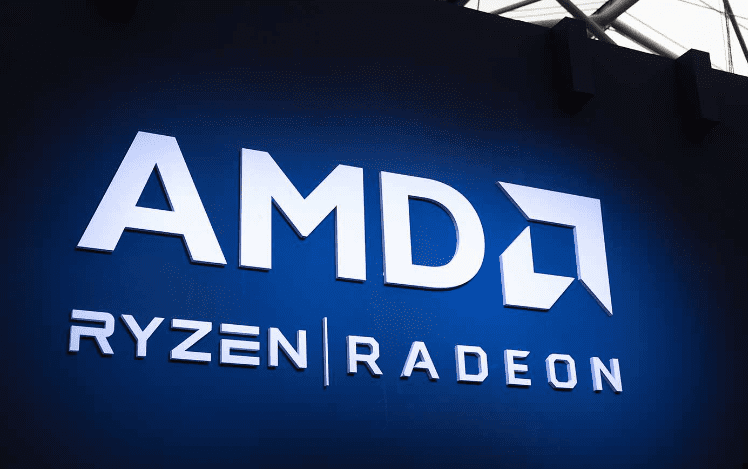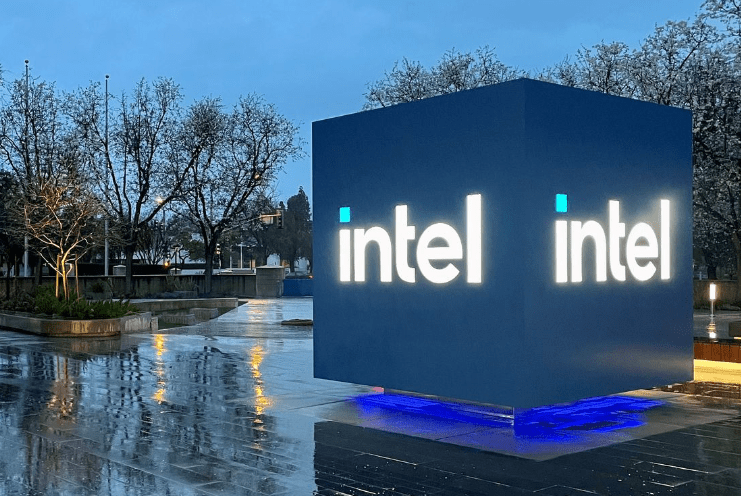The world of graphics processing units (GPUs) is a fiercely competitive domain, with NVIDIA holding a dominant position for years. However, the landscape is evolving, and a growing number of formidable nvidia competitors are stepping up to challenge NVIDIA’s supremacy. Are you ready to explore the top contenders in the GPU space and discover how they stack up against the industry giant?
In this thrilling journey, we will delve into the world of AMD, Intel, Apple, Sapphire Technology, and other notable nvidia competitors, unraveling their unique offerings and strategies to conquer the GPU market. Prepare to be enlightened as we uncover the innovations and disruptions that are shaking up the GPU landscape in 2023.
Key Takeaways
AMD offers cost-effective graphics cards and mobile computing solutions that rival NVIDIA products.
Intel is diversifying its portfolio with competitive GPUs, while Apple’s M1 chips offer remarkable performance and efficiency.
Sapphire Technology provides budget alternatives to NVIDIA GPUs with customizable aesthetics, while other competitors such as Qualcomm & Broadcom challenge in the mobile/networking sectors.
The GPU Landscape and NVIDIA’s Position in the Market

NVIDIA is the leading provider of graphics processing units (GPUs), which are used in a wide variety of applications, including gaming, artificial intelligence (AI), and data analytics. The company’s market share in the GPU market is over 80%, and it is well-positioned to continue to grow in the years to come.
In the gaming market, NVIDIA’s GPUs are used in the majority of high-end gaming PCs and consoles. The company’s GeForce RTX 30 series GPUs are some of the most powerful GPUs on the market, and they offer a significant performance boost over previous generations. This has helped NVIDIA to maintain its dominance in the gaming market.
In the AI market, NVIDIA is also a leader. The company’s graphics processing units (GPUs) find applications across a diverse range of AI fields, such as machine learning, natural language understanding, and computer vision. NVIDIA’s AI platform, NVIDIA CUDA, is one of the most popular AI platforms in the world.
Related Article: A Comprehensive Analysis Of Starbucks Competitors
NVIDIA’s Key Metrics
Total Sales
| Year | Sales (USD) |
|---|---|
| 2018 | $10.92 Billion |
| 2019 | $14.71 Billion |
| 2020 | $16.68 Billion |
| 2021 | $26.91 Billion |
| 2022 | $26.97 Billion |
Net Income
| Year | Net Income (USD) |
|---|---|
| 2018 | $4.14 Billion |
| 2019 | $2.79 Billion |
| 2020 | $4.33 Billion |
| 2021 | $9.75 Billion |
| 2022 | $4.36 Billion |
AMD: A Strong Contender in the GPU Space

Advanced Micro Devices (AMD) has long been a rival to NVIDIA in the GPU space, offering cost-effective graphics cards that consistently go head to head with NVIDIA’s products in terms of performance. This technology company, based in Santa Clara, has made significant strides in the market, presenting a challenge to NVIDIA as consumers prioritize cost-effectiveness alongside performance. When it comes to how NVIDIA compares, the competition remains fierce.
AMD’s Radeon graphics cards and mobile computing solutions stand as viable nvidia alternatives for customers seeking budget-friendly options without sacrificing performance. As a result, AMD has carved out a considerable portion of the GPU market, proving to be a formidable competitor to NVIDIA.
Radeon Graphics Cards
AMD’s Radeon Graphics. Cards are a popular choice among gamers and professionals alike, thanks to their impressive power and visual fidelity. These cards support advanced technologies like AMD FreeSync, AMD Eyefinity, and AMD CrossFire, catering to a wide range of applications, from gaming to artificial intelligence.
The Radeon RX 7000-series and Radeon RX 6000-series are prime examples of AMD’s commitment to delivering high-performance GPUs at competitive prices. The array of features offered by Radeon Graphics Cards, along with support for popular APIs like DirectX 12, Vulkan, and OpenCL, keeps them competitive against NVIDIA’s offerings, solidifying their place among top GPU contenders.
Mobile Computing Solutions
AMD has also made significant inroads in the mobile computing market, offering a range of products designed to cater to the needs of various users. AMD’s AMD processors. RyzenTM processors for creator laptops to AMD RyzenTM PRO processors for business environments, AMD provides power-efficient and high-performance solutions.
In addition, the innovative nature of AMD and its drive for market expansion are evident in its embedded products for IoT gateways and edge computing applications. As a result, AMD poses a substantial challenge to NVIDIA in the laptop and portable device market, diversifying the competitive landscape.
Intel: Diversifying into Graphics Processing Units

Intel, another heavyweight in the technology industry, is broadening its horizons by venturing into the GPU market. With the launch of Xe Graphics and ARC GPUs, Intel is poised to make a significant impact on the GPU landscape, while continuing to dominate the integrated circuits market.
NVIDIA might face challenges as Intel steps into the GPU market, utilizing its profound knowledge in integrated circuits and other technologies to create competitive GPU offerings. This diversification signals an exciting shift in the GPU market, as Intel seeks to challenge NVIDIA’s position and gain a foothold in the gaming sector.
Xe Graphics and ARC GPUs
Intel’s Xe Graphics and ARC GPUs are a testament to the company’s determination to compete with NVIDIA’s top-tier GPUs in the gaming market. The Xe Graphics architecture powers Intel’s debut Arc ‘Alchemist’ graphics cards, while the high-performance ARC GPUs are optimized for gaming, providing a formidable alternative to GPUs from NVIDIA and AMD.
Intel ARC GPUs come with some impressive features, including Xe Supersampling, Deep Link Technology, and Xe and Ray Tracing cores. It promises to deliver an extraordinary gaming experience. With the launch of its ARC GPU for PC gaming, Intel demonstrates its readiness to significantly influence the gaming market and challenge NVIDIA’s dominance.
Integrated Circuits and Beyond
Intel’s prowess in integrated circuits and semiconductor devices is well established, with the company manufacturing a wide variety of ICs for multiple applications, such as microprocessors and memory chips. This extensive expertise positions Intel as a formidable competitor to NVIDIA, as the company leverages its knowledge to diversify and innovate in the GPU market.
Intel’s IDM 2.0 Hybrid Manufacturing. Strategy further reinforces the company’s commitment to product leadership and innovation, ensuring that it remains a powerful contender in the GPU market. The expansion of Intel’s portfolio and exploration of new opportunities is likely to create a more competitive and dynamic GPU landscape.
Apple: Shaking Up the GPU Landscape
Apple’s entry into the GPU market represents a significant disruption, as the company’s M1 Pro, M1 Max, and M1 Ultra chips challenge NVIDIA’s dominance with their remarkable performance and efficiency. These power-efficient processors contribute to the impressive graphics capabilities of the MacBook Pro 14 and 16, directly competing with NVIDIA’s offerings.
Apple’s claim that its M1 Ultra, made up of two M1 chips with 64 GPU cores, can outperform the RTX 3090 while using 200 watts less power, underscores its formidable presence in the GPU market. As Apple continues to innovate and disrupt, NVIDIA’s position in the industry is being challenged like never before.
Performance and Efficiency
Apple’s M1 Pro and M1 Max GPUs offer performance that rivals that of AMD and NVIDIA GPUs while providing up to 50% better performance per watt. This focus on both high performance and energy efficiency underscores Apple’s commitment to deliver exceptional products that challenge the status quo in the GPU market.
Thanks to these innovations, Apple’s chips are rapidly garnering popularity among users seeking high performance without sacrificing energy efficiency. Their impressive capabilities have undoubtedly turned heads in the GPU market and solidified Apple’s position as a formidable competitor to NVIDIA and AMD alike.
Impact on Mac Users
The introduction of Apple’s chips has significant implications for Mac users, who may no longer need to rely on NVIDIA GPUs for high-performance graphics. Prior to the advent of Apple’s chips, Mac users were limited in their choice of GPUs, often turning to NVIDIA’s offerings for superior graphics capabilities.
However, with the arrival of Apple’s M1 Pro, M1 Max, and M1 Ultra chips, Mac users now have a range of alternatives, including AMD and Intel GPUs, as well as Apple’s own chips. This newfound freedom of choice has the potential to reshape the dynamics of the GPU market, as Mac users explore the diverse options available to them.
Sapphire Technology: Customizing AMD-Based Graphics Cards

Sapphire Technology is another player that is making waves in the GPU market, specializing in manufacturing customized AMD-based graphics cards. The company offers a range of budget-friendly options with enhanced performance and aesthetics, catering to the needs of consumers who seek cost-effective alternatives to NVIDIA’s GPUs.
Sapphire, through its collaboration with AMD, produces affordable graphics cards that can compete directly with NVIDIA’s offerings, giving customers an appealing choice in GPU selection. This collaboration has enabled Sapphire Technology to carve out a niche in the market, further diversifying the competitive landscape.
Budget-Friendly Options
Sapphire Technology’s commitment to producing budget-friendly graphics cards is exemplified by its Sapphire Pulse Radeon RX 7600 and Sapphire 11310-01-20G Pulse AMD Radeon RX 6600 Gaming Graphics Card. These cards are powered by AMD’s 7nm RDNA2 architecture and offer impressive performance for their cost, making them attractive options for consumers on a budget.
Sapphire Technology strengthens its position as a viable alternative to NVIDIA in the GPU market by providing cost-effective solutions that don’t compromise on performance. This focus on affordability, combined with the company’s strategic partnership with AMD, allows Sapphire to deliver compelling products that resonate with a wide range of customers.
Aesthetics and Personalization
Sapphire Technology sets itself apart from other NVIDIA competitors by focusing on aesthetics and personalization. The company offers a range of customization options, including NITRO Glow, which allows gamers to tailor their battlestation aesthetics, and built-in ARGB for further personalization of their graphics cards.
This emphasis on aesthetics and customization demonstrates Sapphire Technology’s commitment to providing consumers with unique products that cater to their individual preferences. By offering visually appealing and personalized GPUs, the company is not only competing with NVIDIA on performance, but also on design and user experience.
Other Notable Competitors
The GPU market is teeming with Nvidia’s competitors, such as:
Qualcomm
Broadcom
Texas Instruments
Microchip Technology
NXP
These companies offer mobile, networking, and semiconductor solutions that challenge NVIDIA’s dominance, further diversifying the competitive landscape.
As these companies continue to innovate and expand their product offerings, the GPU market becomes increasingly dynamic and competitive. Monitoring these players is vital, as their industry contributions have the potential to transform the GPU landscape and possibly disrupt NVIDIA’s market position.
Mobile and Networking Solutions
Companies like Qualcomm and Broadcom are making inroads in the mobile and networking sectors, offering chips for smartphones and 5G technologies that compete with NVIDIA’s solutions. Qualcomm’s Cloud AI100, for example, has demonstrated exceptional power efficiency, latency, and throughput in its class, making it a compelling alternative to NVIDIA’s products.
Broadcom, on the other hand, has secured a deal with Apple to supply $15 billion worth of smartphone chips between 2021 and 2023, further solidifying its position as a strong competitor in the mobile and networking market.
The growth and innovation of these companies signifies a substantial challenge to NVIDIA’s dominance in the mobile and networking sectors.
Semiconductor Alternatives
Semiconductor alternatives from Texas Instruments, a leading semiconductor company, Microchip Technology, and NXP are providing cost-effective solutions for various industries, expanding the competitive landscape in the GPU market. These companies manufacture a wide range of semiconductor devices, catering to the needs of diverse customers and offering budget-friendly options that challenge NVIDIA’s products.
The growing market presence of these semiconductor alternatives diversifies the competitive landscape, providing consumers with an expanded choice of GPUs and related technologies. This increased competition is a testament to the dynamic nature of the GPU market and the relentless drive for innovation within the industry.
Summary
As we have explored throughout this article, NVIDIA faces an array of formidable competitors in the GPU market, each offering unique solutions and innovations that challenge the industry giant’s dominance. From AMD’s cost-effective Radeon graphics cards to Apple’s disruptive M1 chips and Sapphire Technology’s customized AMD-based GPUs, the competitive landscape is more dynamic and diverse than ever before.
While NVIDIA remains a powerful force in the GPU market, it is essential to recognize the growing influence of its competitors and the potential for disruption in the coming years. As the industry continues to evolve, the battle for GPU supremacy will undoubtedly become even more intense, pushing the boundaries of innovation and performance to new heights.
Frequently Asked Questions
Who is Nvidia biggest competitor?
NVIDIA’s biggest competitors are Broadcom, Taiwan Semiconductor Manufacturing, AMD, Alphabet, Oracle, Microsoft, Apple, and Intel.
These companies operate within the “computer and technology” sector.
Is AMD and Nvidia competitors?
AMD and Nvidia are rivals in the market for graphics-processing units (GPUs) and both companies are aiming to tap into the lucrative AI chip market. As evidenced by their respective stock prices, Nvidia appears to be the clear leader whereas AMD is falling further behind.
What is Nvidia’s market share and competitors?
Nvidia holds a 80% market share on GPU’s compared to its competitors, as of Q2 2023.
How does Intel’s entry into the GPU market affect NVIDIA?
Intel’s entry into the GPU market presents a competitive challenge to NVIDIA, as Intel leverages its expertise in integrated circuits to develop competitive GPU offerings.
Intel’s GPUs are expected to be more power efficient and cost-effective than NVIDIA’s offerings, making them attractive to consumers and businesses alike. Intel’s GPUs are also expected to be more compatible with existing Intel hardware, making them easier to use.
How do Apple’s M1 Pro, M1 Max, and M1 Ultra chips compete with NVIDIA’s GPUs?
Apple’s M1 Pro, M1 Max, and M1 Ultra chips offer comparable performance and power consumption to NVIDIA’s GPUs, making them a strong competitor in the market.
This makes them a great choice for those looking for a powerful and efficient processor.




